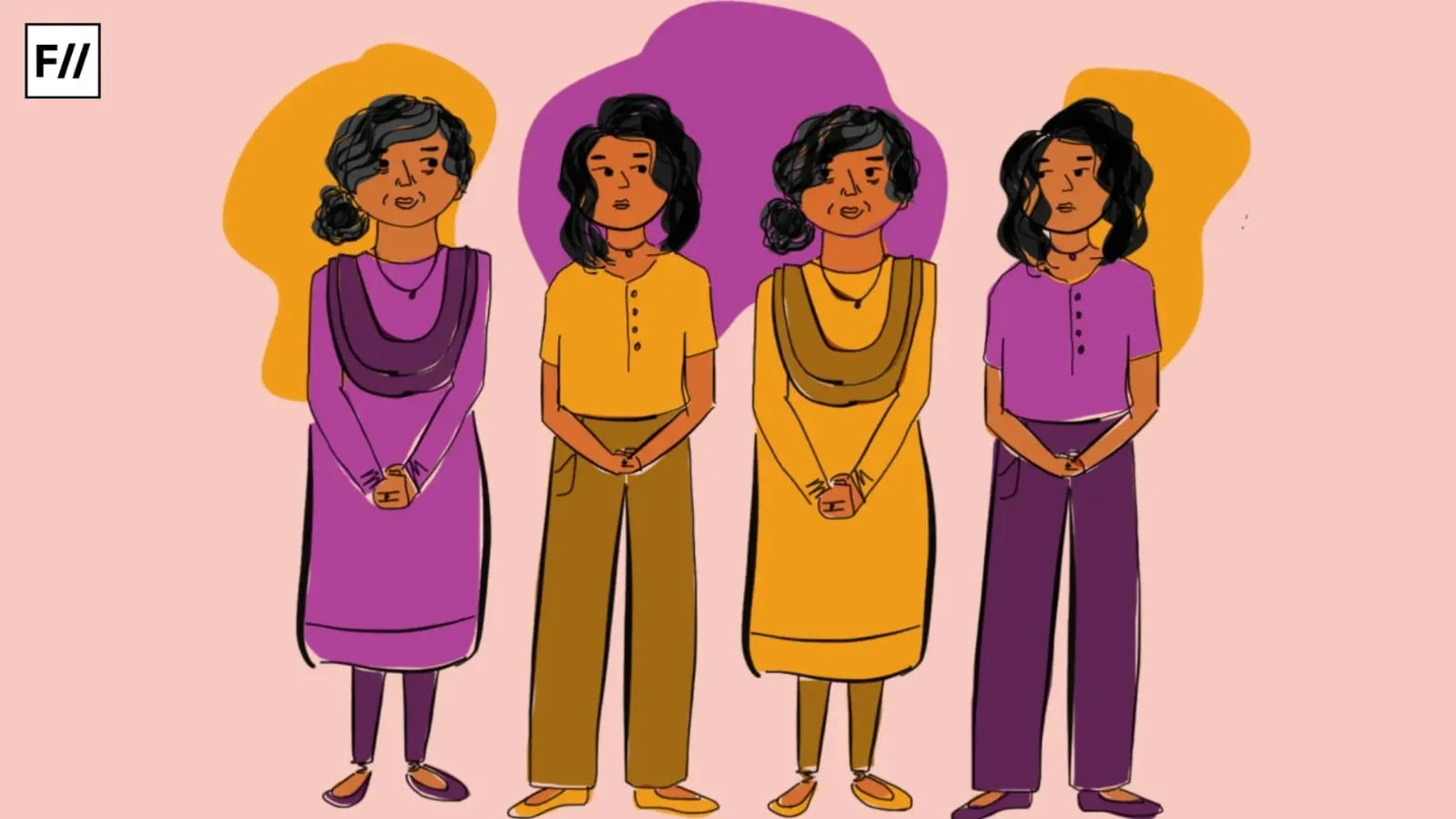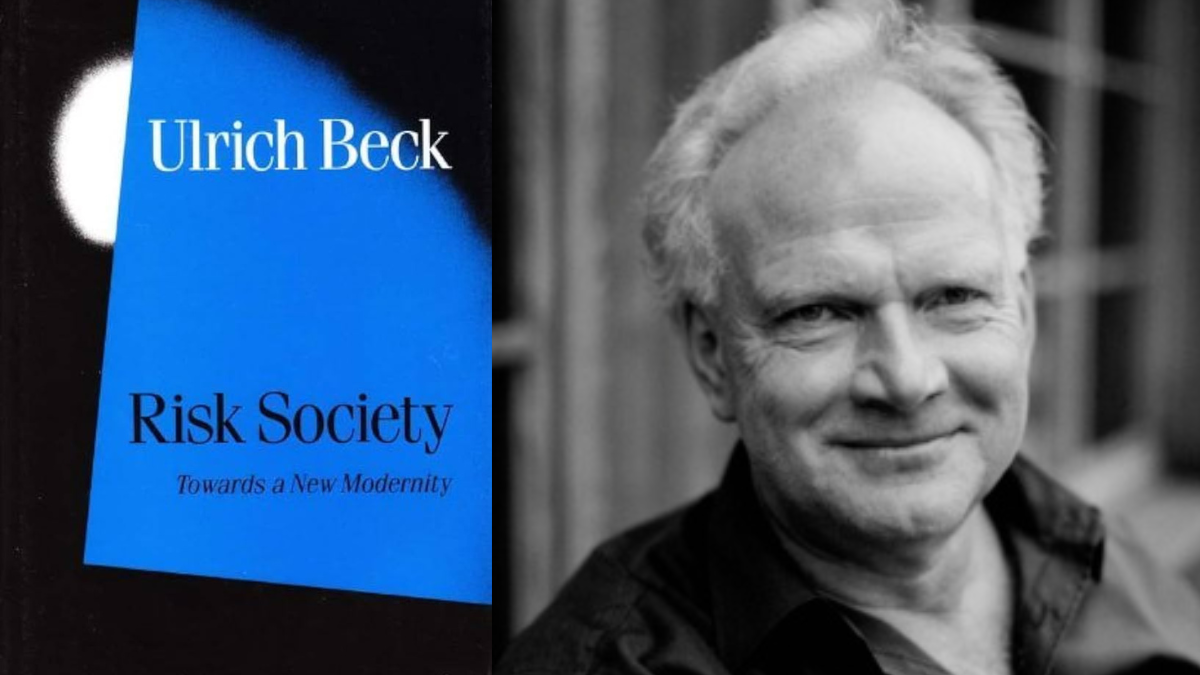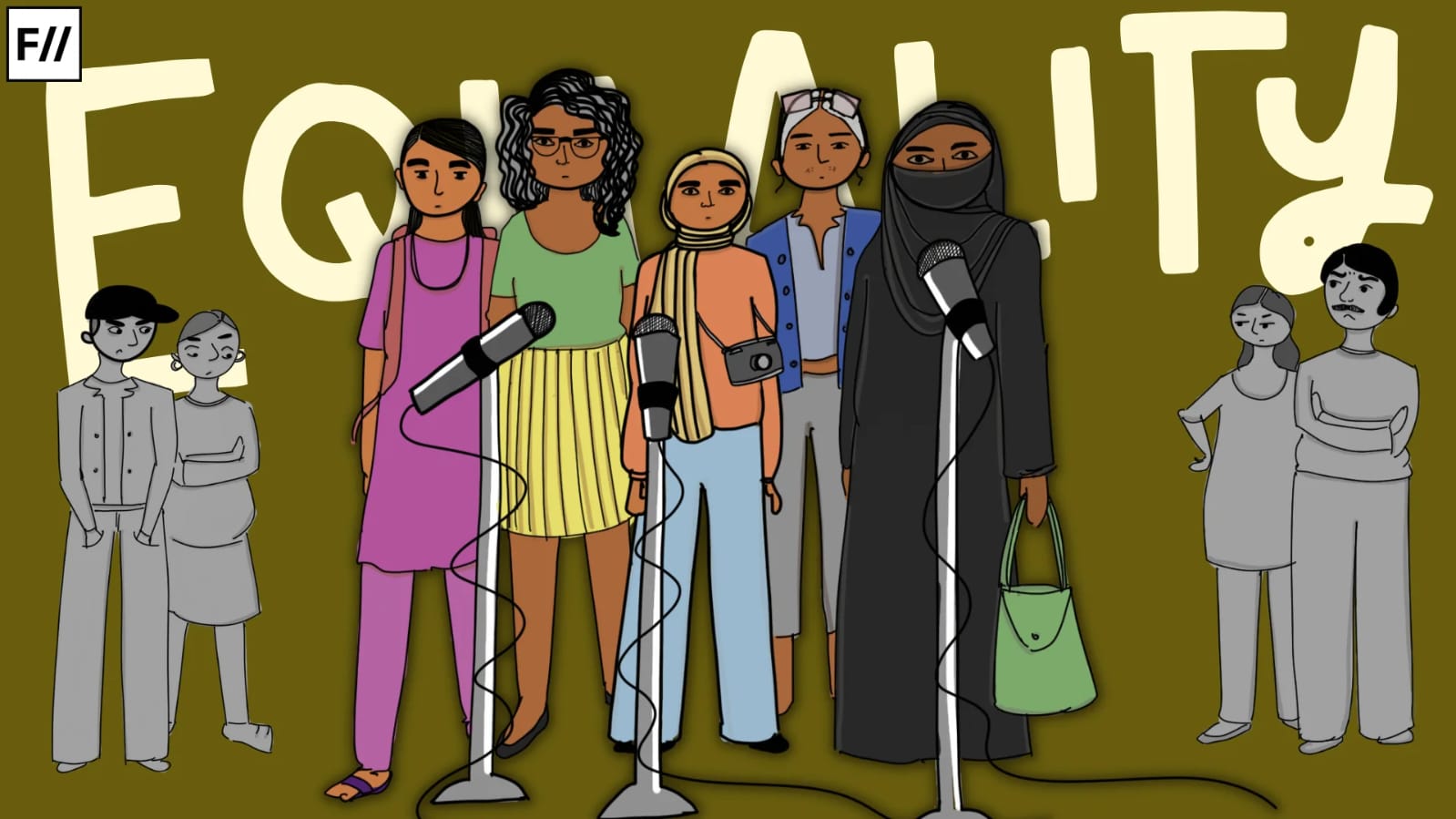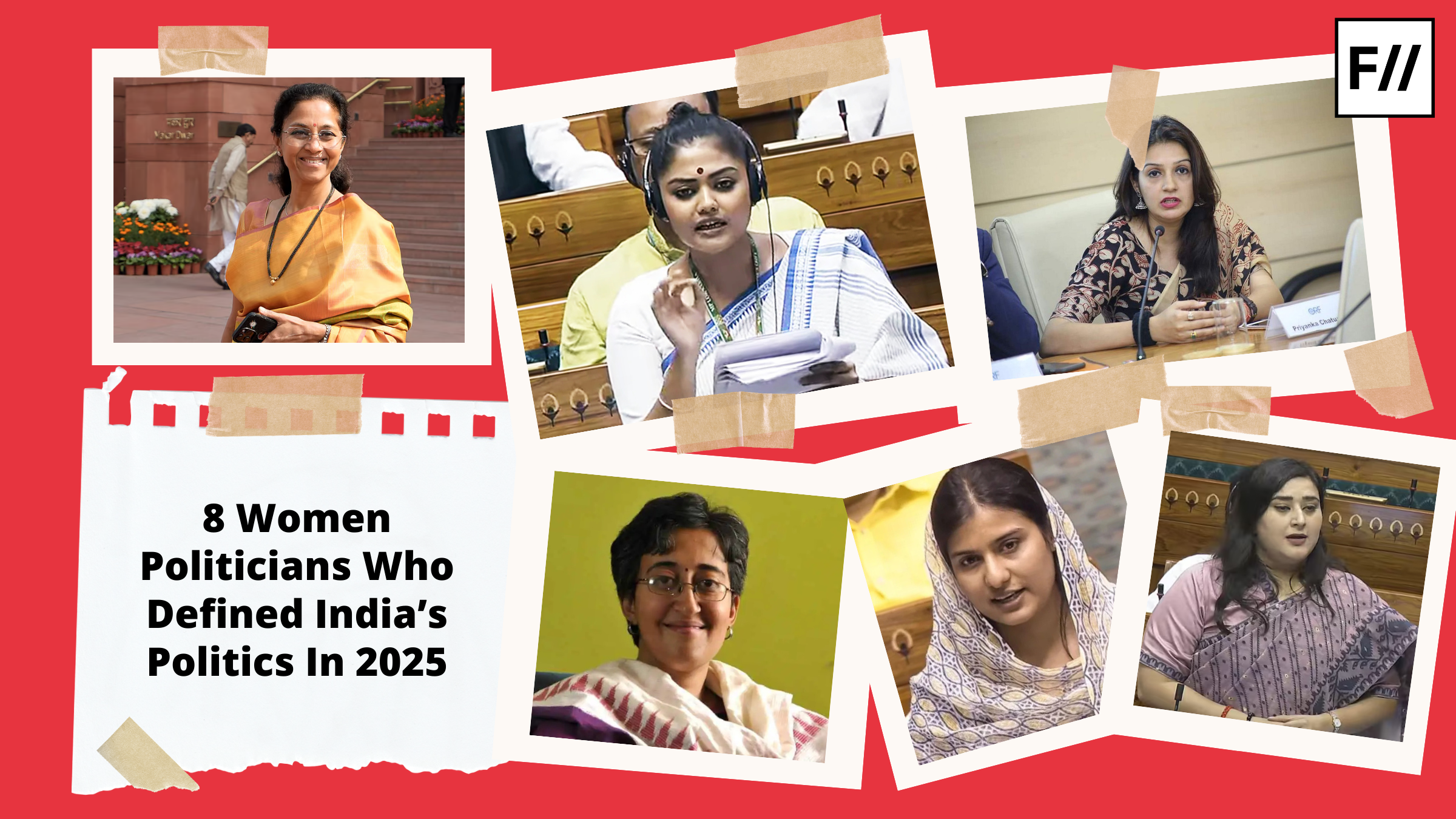The term ‘risk’ seems to have become omnipresent across individuals’ lives, spanning across their decision-making patterns, livelihoods, patterns of media consumption. All of us have come to inhabit a universal sense of fear for the so-called global risks: ‘terrorism’, ‘climate-change‘ ‘diseases’ etc. These risks are not limited to a certain region, but span across humanity. However, acknowledgements of such risks are accompanied by assiduous efforts to evade them-in international summits, government policies and even in the every day decisions of individuals-through careful calculations and planned efforts at mitigation. The experience of modern life revolves around the perception and control of risk. Risk thus becomes the cornerstone of modernity. This is the central thesis of Ulrich Beck’s ‘Risk Society‘.
Manufactured risks in modern society
Risikogesellschaft (Risk Society) was written and published in 1980s at the height of the Cold War when the world was reeling from the emergence of a new kind of risk: that of the nuclear war. International relations and domestic policies had been realigned to organise themselves around the two major nuclear powers of the time, US and the Soviet Union.
It was under these circumstances that Beck posited the centrality of risk in the modern society, particularly how modern societies are shaped around management and distribution of risks.
However, Beck also noticed that these risks are not, as in pre-industrial societies, induced by nature but ‘manufactured’ by the products of modernisation, technology and industrialisation itself. Moreover, such risks are no longer confined to the local boundaries such as floods and famines. They are instead global with consequences that span across borders and generations, like that of nuclear fallouts and climate change. Risks therefore have become omnipresent and span across time.
With the onset of such risks however, the organisation of modern society has also changed, with exposure to such risks becoming a central point of social conflict and class organisation. Thus, as opposed to previous paradigms based on the distribution of wealth (i.e. who gets what?), the point of social conflict has shifted to distribution of risk (i.e. who is exposed to what?). The central social question thus has ultimately shifted from that of scarcity (distribution of scarce resources as posited by classical economics) to that of insecurity and risk. The sense of predictability isdestroyed just as constant threat of risks produce widespread anxieties in people.
The risk society has brought about a change in the global ontology itself (that is, how we understand our existence and beings as humans) to one that is centred around risks, and their preventions. Whether or not our chances of coming across such risks are substantial, the fear produced by their existence is what has shaped the modern discourse.
Risk, modern state and control
The consequences of omnipresence of manufactured risks leads to the paradigm of controllability, that is, the obsession of the modern state, along with science, industry and other emblems of modern institutions to calculate and mitigate such risks. Thus, the rational emphasis on ‘risk minimisation’. In this sense, Beck has proposed the theory of ‘Risk Society’, a society that is increasingly occupied with debating, preventing and managing risks that it itself has produced.
The consequences of omnipresence of manufactured risks leads to the paradigm of controllability, that is, the obsession of the modern state, along with science, industry and other emblems of modern institutions to calculate and mitigate such risks.
Further, scholars like Foucault have expanded the concept arguing for a constructionist perspective of risk; risk is not simply an objective reality but is brought to the forefront through discourses and practices that identify certain phenomena as “risky” and in need of management. However, the definition of what identifies as risky lies in the hand of the dominant group.
Foucault also describes risk as a tool of control through the concept of governmentality, modern states exercise power not just through laws or force, but through the management, regulation, and normalisation of populations. That is, modern states, controlled by dominant groups not only define ‘risk’ and ‘Risky behaviour’ but also control such behaviours through punitive measures.
Far too often we have witnessed the pre-emptive measures that attempt to rehabilitate the behaviours of certain groups to prevent ‘risks’. Such identification and intervention with at-risk or deviant populations then become a form of social control. Thus ‘risk’ becomes a tool for government to control populations and modern risk societies become subject to increased monitoring and surveillance.
The Cultural Perception of theory of risk is taken forward by Mary Douglas according to whom, the perception of risk itself is constructed by culture. People’s perceptions of risk are influenced by their position within social structures.
The Cultural Perception of theory of risk is taken forward by Mary Douglas according to whom, the perception of risk itself is constructed by culture.
Following this, scholars such as Deborah Lupton highlight the positive charges given to ‘risk’. Often ‘risk-taking’ is identified as a positive trait and a necessity for ‘self-actualisation.’ However, as risk is societally constructed, the ability to ‘take-risks’ depends on the social positions of the risk-taker.
The intersectional inequalities of the risk society
Although Beck initially suggested that class distinctions would become less relevant in the risk society, later critiques and discussions have shown that class, wealth, and social position remain crucial in determining who is most exposed to risk and who can protect themselves. Thus, the burden of risk is not equally distributed.

For examples, marginalised groups, such as women face increased exposure to global risks and more significant consequences of environmental disasters, health risks, and economic vulnerabilities. In developing countries, poverty, class and gender intersect to exacerbate such vulnerabilities. Women are also often more susceptible to health risks associated with environmental hazards, such as water pollution, contaminated air, and ecological imbalances. Further, climate change induced extreme weather events disproportionately affects women’s access to food and other resources, which in turn affects their health. Limited access to financial resources also means limited ability to recover from such environmental and economic disasters. Gendered responsibilities and women’s role as caregivers mean that they bear the emotional and physical burden of managing risks in the face of unequal resource distribution.
Moreover, a majority of women are employed and engaged in the informal sector ensuring no insurance or security for them in case of disasters.
Moreover, a majority of women are employed and engaged in the informal sector ensuring no insurance or security for them in case of disasters.
Thus, Beck’s concept of unequal risk distribution, works in a multilayered manner whereby risks and adaptive capacities are not only distributed unequally among developed and developing nations but are shaped by the intersecting layers of class, caste and gender inequalities with the most marginalised groups (especially women coming from poor and marginalised groups) facing a disproportionate burden of the disaster.
Women at ‘risk’ and as risk
Women are also not a neutral recipient of institutional efforts to mitigate risks as discussed by Foucault. Rather, when women’s behaviors, bodies, or choices deviate from institutional norms (e.g., in sexuality, reproduction, or motherhood), they are labeled to be “at risk” and become targets for intervention, surveillance, or corrective action. Dualistically, deviation from norms which challenge efforts at societal normalisation led to the construction of women as a “risky” group requiring control. Such efforts at intervention and surveillance are implemented not through formal institutions but rather informal institutions of family, kinship and localities.
Douglas’ theory also indicates the differential ways in which women perceive risk. The construction of ‘risk-taking’ as a primarily masculine trait produces differentials in risk-taking behaviors. Further, the double burden of division of labour positioning women as primary caregivers lead them to avoid risk-taking. For example, women’s broader concern for community safety contrasts with men’s narrower focus on personal risk leading to differences in ‘risk-taking behaviour’ of men and women due to inequality in resources and the structural division of labour.

Thus, ‘risk’ is more than just a neutral threat. It is a socially constructed term meaning different things to different people. In a world, constantly plagued by global threats and catastrophe, difference between ‘haves’ and ‘have-nots’ are constructed by how likely they are to be impacted by these shared risks. This difference is not determined by distribution of wealth but also social structures that place the burden of such risks disproportionately on women especially those who are living on the margins. Their role as ‘community caregivers’ prevent them from seeking upward mobility through the aforementioned ‘risk-taking’ thus trapping them in a vicious cycle of ‘risk vulnerability’ and ‘risk-aversion.’
About the author(s)
Sohalika Shrivastava is a 3rd year student at IIT Madras out and about to carve a niche for herself. In her free time she likes to read about and learn animal fact






